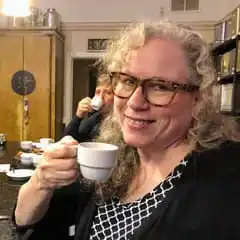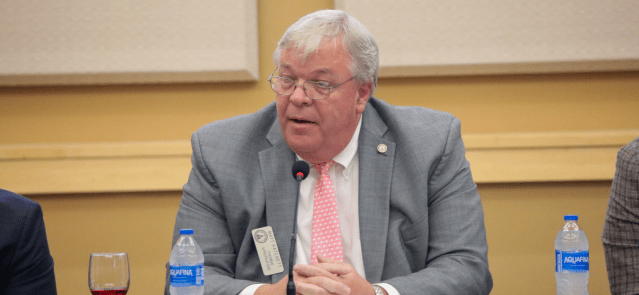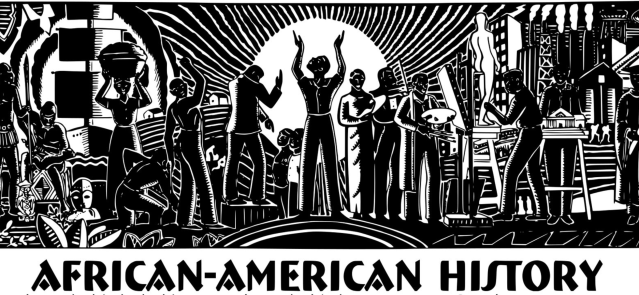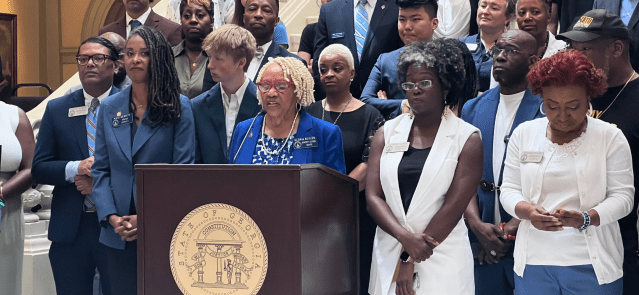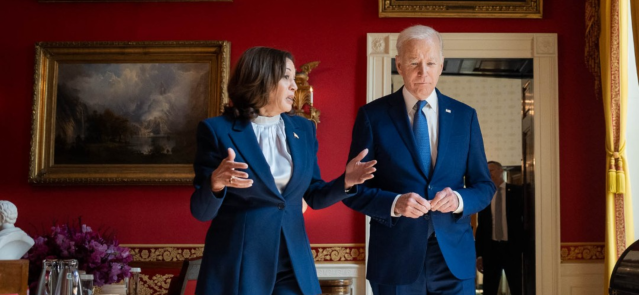Stay ahead of the curve as a political insider with deep policy analysis, daily briefings and policy-shaping tools.
Request a DemoCoastal Resources director on protecting the salt marsh, red snapper, and keeping oysters safe to eat
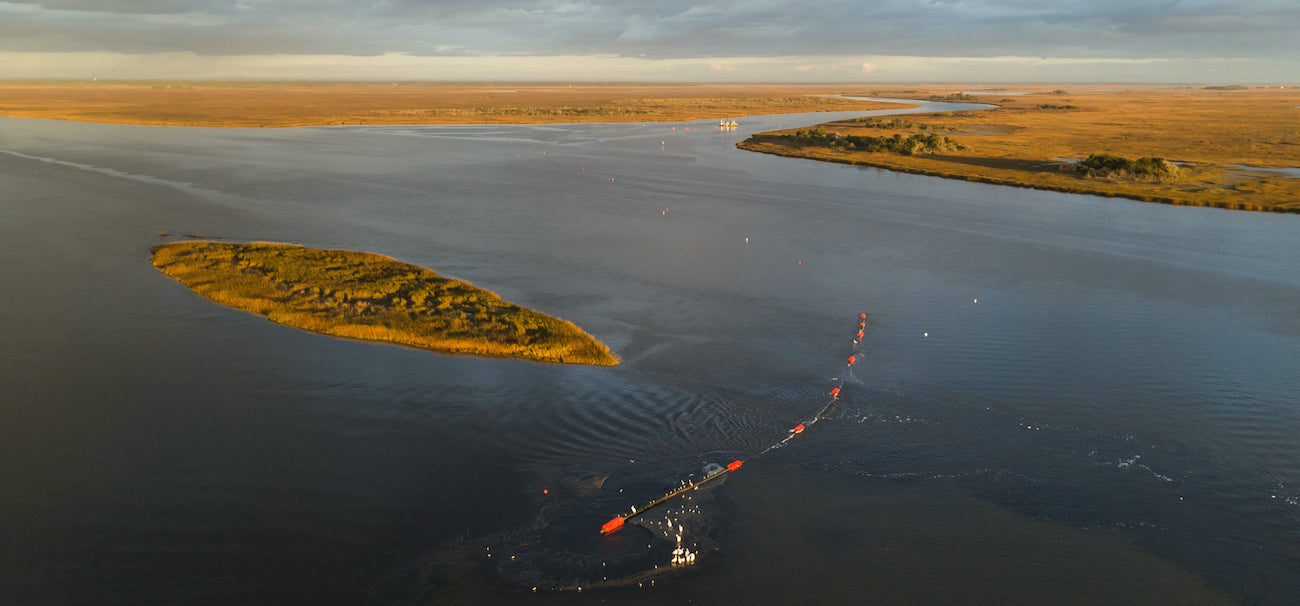
Sunrise over the Altamaha River. In partnership with Georgia Division of Natural Resources, the U.S. Army Corps of Engineers used dredge material from the Atlantic Intracoastal Waterway to enlarge a shorebird nesting island in the Altamaha Sound to help offset the loss of nesting areas washed away over the past several years from hurricanes and tropical storms.(Credit: Andy Johnson/Cornell University via Georgia CDR)
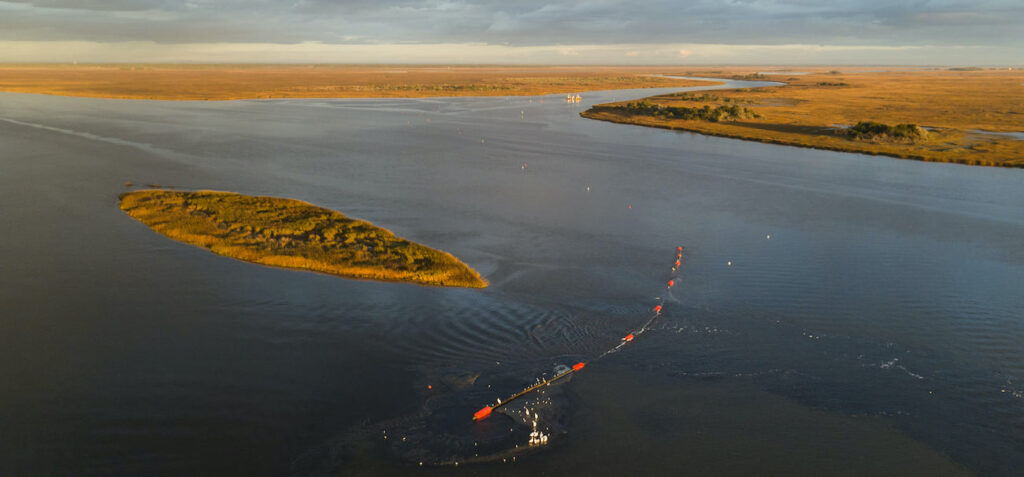
Doug Haymans is a coastal Georgia native who grew up in the small town of Richmond Hill, near Savannah, where he did a lot of fishing and hunting in his youth. After studying biology at the University of Georgia, he became a fisheries expert, working with oysters in Maryland and as a fisheries biologist in Florida.
Haymans migrated back to Georgia in 1999 and began working for the Coastal Resources Division (CRD) of the Department of Natural Resources, running the boating/fishing and habitat programs, writing regulatory compliance reports and getting increasingly involved in policy and legislation. In 2017, he was appointed director of the CRD, based in Brunswick, where he manages 68 employees and an $8.5 million budget.
Haymans talked to State Affairs about his current priorities for the division, including protecting vulnerable species from natural and manmade threats, supporting fisheries, and responding to how climate change is impacting salt marshes along the coast. He gave us a sneak peek at the CRD’s annual Coastal Georgia Ecosystem Report Card, which will be released this Saturday — Earth Day (look out for our story including the report card then). He also gave us a preview of CoastFest, the annual event in Brunswick that celebrates the ecology and culture of coastal Georgia, also happening Saturday.
This conversation has been edited for brevity and clarity.
Q. What is the scope of the Coastal Resources Division? What geographic areas do you cover, and what are you in charge of?
A. So we’re one of five divisions in the Department of Natural Resources, and we work closely with our other divisions on a daily basis. Our mission is to balance development, protection of natural assets, social and cultural heritage, and recreational resources for present and future generations. And I do a lot of presentations to civic groups, and I tell folks that ‘balance’ is a good visual for me, but it oftentimes feels like a vise. Seems like you’re being squeezed between the various competing interests.
At Coastal Resources, we have three primary responsibilities — the first is fisheries. We are marine fisheries-focused. That does not include whales, turtles, dolphins, manatees, things of that nature. Those fall under our Wildlife Resources Division. So think trout, flounder, red drum, tripletail. With regard to fisheries, we work cooperatively both interstate and federally, with our sister states and the federal government. Then we have an 11-county area of responsibility which extends along basically the entire coast … which is roughly 105 miles long, and one tier of counties inland. We’re responsible for managing our shores, our beaches and our marshes, and that includes saltwater from three miles offshore and up through our tidal wetlandsand extending inland as far as the reach of the tide.
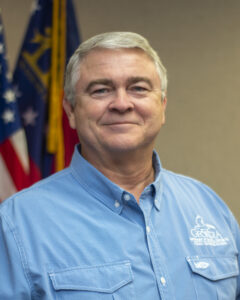
Q. What are some of the most challenging issues right now that you’re managing as you’re trying to strike that balance between protecting wildlife and the species living along the coast with all of the competing interests driven by people and development and commerce?
A. Well, I’ll just say that development is an always ongoing thing. There are times when there’s more development because the economy is doing better than others, but the Coastal Marshes Protection Act and the Shore Protection Act have been in place since 1970 and 1979, respectively, and we try the best we can to apply those laws to development as each project comes up. And ultimately, we have a committee of citizens that make decisions on the larger permits, community docks, marinas, commercial development, things like that along the marsh, or things that impact the beaches. And we do our best to work within the confines of those laws to get the best projects that we can. Those are always challenging. Because you’re working around sensitive environments, you know, the marsh and the beaches.
But on top of that now are the things related to climate change and sea level rise. I don’t think anyone can doubt — the Cockspur Island Lighthouse in Savannah is our primary indicator, and it has shown increasing levels of sea level rise over the last century. We look at storm events, we look at sunny day, high-tide flooding events, which are more frequent than they had been in the past. We feel like we understand that sea levels are rising, and we’re predicting 3 feet over the next 100 years or so. My office will be underwater. A lot of coastal Georgia will be underwater. With increased tides and increasing sea level rise, we look at things like salt marsh migration, and will the salt marsh keep up with sea level rise where it sits, or does it need a place to grow horizontally across the plane? All of those are things that we’re looking at, and we’re working with other groups to try to figure out how we can best help the local communities prepare for that, and mitigate that.
And then on the fisheries side, you know, the hot-button topics are red drum, red snapper. We struggle with quote-unquote overfishing and how to best address it. And oftentimes, some of the only tools you have are to limit opportunity. And fishermen don’t like that [restrictions on the number of fish allowed to be harvested].
Q. On Saturday, you’ll be releasing your annual coastal ecology report card. What are some of the key takeaways?
A. I will say from my involvement over the years, it’s a good way for all of the divisions to come together to share data in a meaningful way. We work closely with our Wildlife Resources Division on it. It’s one time that all of us are able to sit down and sort of look at the data together and see whether there’s anything that’s causing concern or not. I will say that there’s a lot of things that go into the report card that are out of our control, like weather, rainfall, drought, natural biologics, things like the avian flu [i.e., bird flu]. …This year blue crab is really down in the scoring, and we believe it’s down because of the change in rainfall this past year, which affects salinity.
Q. The report indicates that water quality is good this year. How does that impact crab and shellfish, and what do you have to look out for that might make people sick?
A. It really depends on the critter. With crab, the disease is a naturally occurring micro [parasite] that occurs in the water, and it occurs in greater concentrations the warmer and drier it is. The same thing occurs with shrimp. The saltier the water is, the drier it is, the greater the prevalence of black gill disease. Since crabs are cooked, there are less health concerns. Same thing with black eel and shrimp. Again, it’s a cooked product. We rarely eat it raw, maybe some sushi, where you’re eating the body, not the gills. In oysters, we’re looking harder at Vibrio bacteria because there’s more that does occur in drier, saltier, warmer conditions, i.e., the summertime. And it is deadly to those who are immunocompromised. And that animal is often consumed raw. And so there is no opportunity to kill that bacteria. And that’s why we have such concern over summer harvest of oysters, and we need to make sure that we get it right.
Q. In 2019, a bill to allow oyster farming in Georgia was passed. Farmers have pushed for summer harvesting. You’ve said that could happen if they can develop a way to keep them chilled from harvest to table. How is that progressing?
A. We haven’t gotten into summer harvest yet because the whole aquaculture farming of oysters hasn’t gotten off the ground yet. We’ve issued six subtitle leases, but the farmers are still waiting on their final permits from the Army Corps of Engineers. …We have individuals who are wild harvesting, and a couple who are growing in intertidal cages, but we don’t let any of those folks harvest during the summertime because of health concerns. So our oyster industry in Georgia, we shut it down right around June 1. We close it through the summertime and we don’t reopen until we get into September when the water temperatures drop below 80 degrees.
As we work into aquaculture, we’ll begin exploring summer harvest. That’s what the farmers want, a year-round opportunity to sell their product. The [regulation] isn’t just in Georgia. This is nationally through the National Shellfish Sanitation Program. All of the states and the FDA have agreed on certain limitations for warm-water harvest. So we’ll be living within those restrictions when we start off oyster aquaculture farming.
Q. An area where you’re having to balance competing interests is around the ports in Savannah and Brunswick. There’s so much need to increase the capacity of the ports. How are you involved in trying to make sure there’s the least amount of ecological disruption involved with that?
A. Anytime there’s a major Corps project like that, we are involved in it from the ground up, and I’m thinking specifically of the Savannah River Harbor deepening project. Both my division as well as Wildlife Resources Division had representation on those teams. And we worked for years to mitigate as much as possible the effects of deepening the Savannah River. We all understand that ports are the engine that drives the economy of Georgia to a large degree. And none of us want to stand in the way of that and we work with, you know, our counterparts in the ports and with the Corps to have input where we can. And for the ports, their emphasis was, as long as we can keep the harbors dredged and open, we don’t care when that occurs. And the horse is out of the barn, so to speak, on dredging. The Savannah River’s a highly impacted ecosystem. And then obviously the Port of Brunswick. And for the most part, those are maintenance dredging projects now. We certainly provide feedback regarding the occurrence of species, what species are there and what their biological requirements are.
Q. Tell us about what’s happening at CoastFest in Brunswick this weekend. ?
A. CoastFest is undoubtedly our largest outreach event of the year. …We’ve been on a three-year hiatus, two years because of COVID, and then last year because of a hurricane. We can’t go another moment without CoastFest. And it’s just a natural fit and it works with Earth Day. It’s a free event for the community. We draw somewhere around 9,000 to 10,000 people over a six-hour period. We have 40-plus exhibitors from across coastal Georgia and inland who have all sorts of environmental education opportunities. Colleges and universities come, and various [nonprofits] come with shows and demonstrations. It’s a great time.
Contact Jill Jordan Sieder on Twitter @journalistajill or at [email protected].
Twitter @STATEAFFAIRSGA
Facebook @STATEAFFAIRSUS
Instagram @STATEAFFAIRSGA
LinkedIn @STATEAFFAIRS
Dive into this year’s coastal ecosystem report card:
Professionals still face licensing delays amid state’s transition to online system
The Gist Georgia’s professionals and business owners are still struggling to obtain professional licenses in a timely manner. As the Secretary of State’s Office rolls out its new Georgia Online Application Licensing System to expedite the process, the efficiency of this new process is being put to the test. What’s Happening Thursday morning at the …
Controversy over AP African American Studies class grows
Rashad Brown has been teaching Advanced Placement African American Studies at Atlanta’s Maynard Jackson High School for three years. He’ll continue to do so — even though the state’s top education official removed it from the list of state-funded course offerings for the upcoming school year. While Brown prepares to start teaching his class on …
Students, teachers, lawmakers blast decision to end AP African American history classes
ATLANTA — A coalition of lawmakers, civil rights leaders, clergy, educators and students Wednesday called on the state’s education czar to rescind his decision to drop an advanced placement African American studies class from the state’s curriculum for the upcoming school year. “This decision is the latest attack in a long-running GOP assault on Georgia’s …
Kamala Harris’ presidential bid reinvigorates Georgia Democrats
Georgia Democrats have gained new momentum heading into the November election, propelled by President Joe Biden’s decision to bow out of his reelection bid and hand the reins to Vice President Kamala Harris. The historic decision, announced Sunday, is expected to prove pivotal in the national and state political arenas and breathe new life and …
